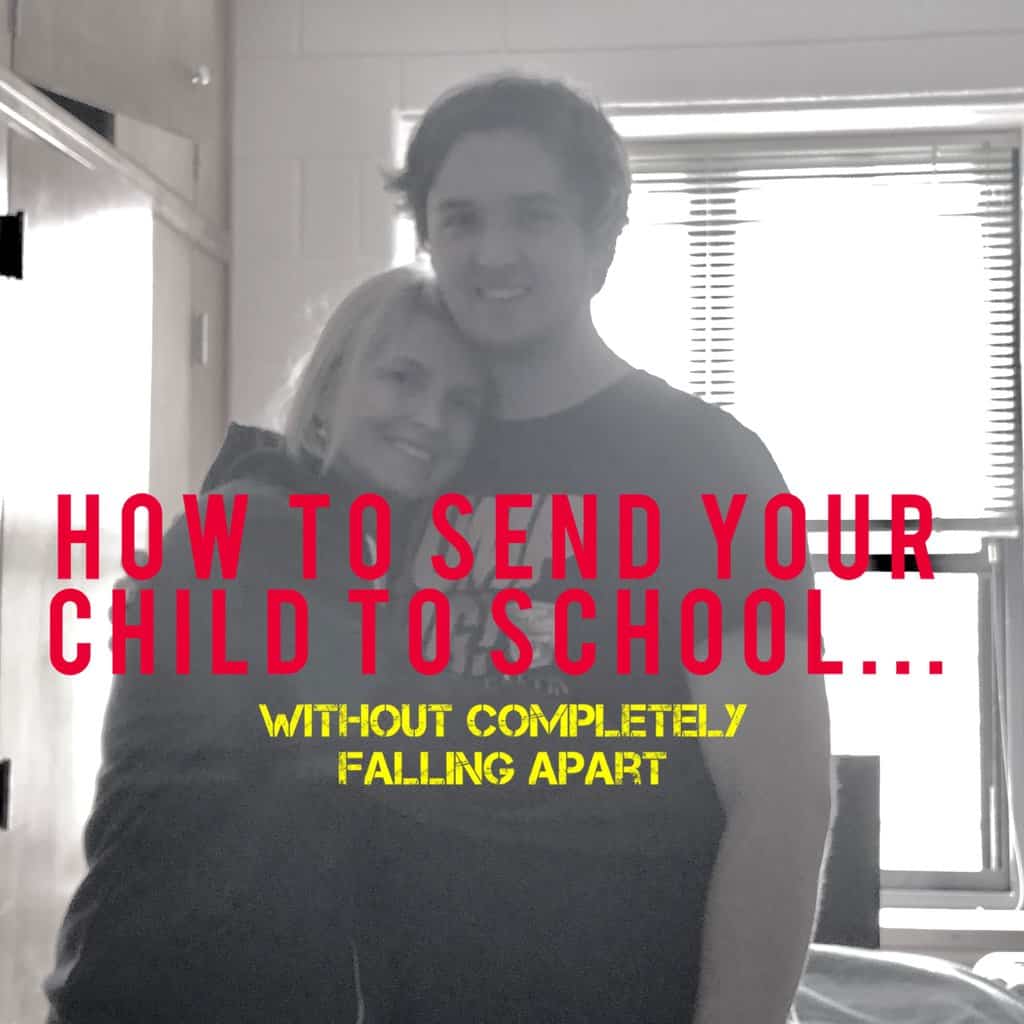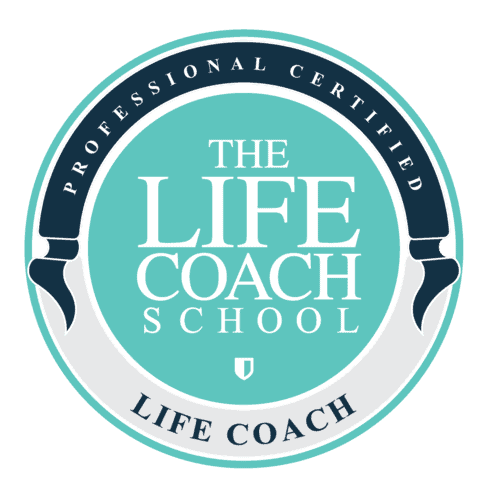Podcast: Play in new window | Download
Subscribe: Apple Podcasts | Spotify | Amazon Music | RSS | More
My son left for college last weekend, gulp.
My son left for college last weekend, hooray!
The fact my son has left for college has created both reactions for me. How can this be? How can I feel such a range of emotions over the same event? Interestingly, it happens all the time. Think of moving or renovating your house. You can feel excitement for what will be while also feeling nostalgia for what was. When your child begins middle school you can feel excitement for her/his new experiences yet sorrow that she’s leaving her innocent elementary school days behind. How can this be? As a cognitive coach I know exactly how. It’s not the things that happen in our life that cause us to feel what we feel but the thoughts we focus on.
How do we know our thoughts create our feelings? Because the same event can make people feel very different things. Take this event: Say you get home today and your partner tells you he got a new cat. I’ll bet that for every ten of you reading, there would be ten different feelings or emotions. Why? Because of our thoughts about our partner getting a new cat. I might think: “How kind, he knows I love cats, or : “How insensitive, he knows I’m allergic”, or: “What an ass, why didn’t s/he ask me what I thought”, etc¦. It’s not the thing happening in our life that causes us to feel a certain way, it’s our thought about it. Same thing with our kid going off to college. It’s a momentous event that will cause us to have have lots of different thoughts (and thus, a variety of feelings).
And here’s the hard truth: you’re the adult. You get to decide how you feel as you move through this process and into a different stage in your life. The thoughts we focus on create the feelings we feel. Consider the following thoughts and how thinking them would generate different feelings:
Life will never be the same.
He’ll be lonely
I’ve been a great mom.
He’s exactly where he’s supposed to be.
Everything is happening exactly as it’s supposed to.
Nothing has gone wrong here.
He’ll struggle.
He’ll have new experiences.
I yelled too much.
How might you feel if you think the thought: “He’ll be lonely”? How might you feel if you think: “He’s exactly where he needs to be” How about when you think: “I’ve been a great mom?” Do you get it? The thoughts you think drive the way you feel. The more you focus on the thought: “He’ll struggle” the crappier you’ll feel. He will struggle. That’s part of life. He will also have new experiences. He will experience moments of joy and moments of sorrow. Nothing has gone wrong, he’s exactly where he’s supposed to be.
It’s up to you to decide what you want to focus on. You can not do anything about his loneliness or his struggles. You worrying about him does not make his transition easier. He or she needs to process his emotions in the same way that you need to process yours. No one can do it for you and no one can do it for him.
Okay Susie, so how to do that? If you’re anything like me, your family or school didn’t teach you how to feel your big emotions. Maybe you’ve spent your life eating, shopping, Netflixing, Facebooking, or yelling your emotions instead of processing them. That’s how I help. Last week’s blog laid out the first three steps in processing an emotion (energy in motion). Name it, feel it, sit with it. Read it again here. This week, I give you some tools as you move on to step four, processing that feeling. Consider this your own college course, a crash course titled Emotional Intelligence 101.
How do we process our emotions? The most crucial piece is to remember the first step of compassionate, mindful living: being what I call a “Compassionate Observer” of your life. Simply put, allow yourself to feel whatever the heck you’re feeling without judgement or criticism. When you can step outside of your head to observe or watch what is going on you will be more in control of your emotions and thus, the results in your life. Here are two steps I take to process my big emotions that don’t involve wine, food, shopping, Facebook, or yelling:
My Favorite 1-2 Punch to Process Big Emotions:
1) Start Writing: When we are in the state of busy and move move move, we don’t realize which thoughts we’re choosing to focus on. This is dangerous as the thoughts we focus on create the feelings we feel. Part of being an emotional adult is learning to manage your mind. How do you want to feel about this? Set a timer for 5 minutes and dump your thoughts out of your head on to paper or a computer screen. You have more than 60,000 thoughts a day and if you don’t pay attention to them they run the show. Dump them out onto paper to see which thoughts you’re focusing on. Those thoughts are creating the feelings you’re feeling. If you want to keep feeling the way you’re feeling, keep thinking the thoughts you’re thinking. Taking just 5 minutes to answer the questions: “What am I thinking?” or “What am I feeling?” will significantly help you.
2) Get Still: Stop. Set a timer for another 5 minutes and close your eyes. Your goal is to focus on your breath. Your mind will wander. Bring it back to your breath. Kindly. Each and every time. Sit. Your job is to see where your mind goes. You are not your mind. Look at your thoughts with curiosity “Isn’t that interesting I think that” and then bring your mind back to your breathing. Feel your physical body. Yes, feel. Do you feel sadness in your body? Where? What does it feel like? Do you feel lonely? Get super descriptive. Emotions are energy and by describing how the actual emotion feels you allow it to move through you. Feel it and then return to your breath. Kindly; Compassionately.
Does taking this two-step process make the emotion go away forever? No. That’s not the point of life. You’re here on earth to feel big emotions. What does this 2-step process do? It allows you to not eat, shop, yell, or drink your emotions. It lessens the emotion in that moment and allows you to feel, breathe, and move on in your day.
I went through the first 30+ years of my life dulling and numbing my emotions: with food, exercise, busy-ness, you name it. There was a piece of me that was afraid to feel my feelings as I thought I’d end up on the bathroom floor sobbing and unable to get up; believing that if I allow myself to feel the sad, I’d enter into some deep dark hole I couldn’t escape from. It’s actually the opposite. Depression is the suppression of emotions so landing in that dark hole or on the floor comes from pushing past our emotions instead of feeling them. Please join me as I now choose to be awake and to experience the life that I’ve created. I no longer choose to bypass feeling my difficult emotions. I choose to live a full + vibrant life and because of that, I am going to feel a full and vibrant array of emotions. I embrace my tears as I embrace my laughs – both add a dimension and fullness to my life that are part of my experience here on earth.
So hey parents, anything you’re feeling is fine. Depending on which thought I’m focusing on, I may be feeling sad, happy, lonely, heartbroken, worried, or full of pride. All of those are fine. What wouldn’t be fine is to not feel or to tell yourself to stop feeling what you’re feeling. It’s also not okay to sit and wallow. Do the work. Set a timer and begin to process these strong emotions in a kind and compassionate way. It’s not okay to be mean to your inner warrior by telling yourself to get over it or to move on. That only leads you to drama and destructful behaviors. Feel. Cry. Laugh. Do what you need to do but mostly? Treat yourself kindly and with compassion. I’m here for you warrior. If you haven’t already, sign up for my free newsletter here. You’re not meant to do this alone.
LISTEN HERE:





